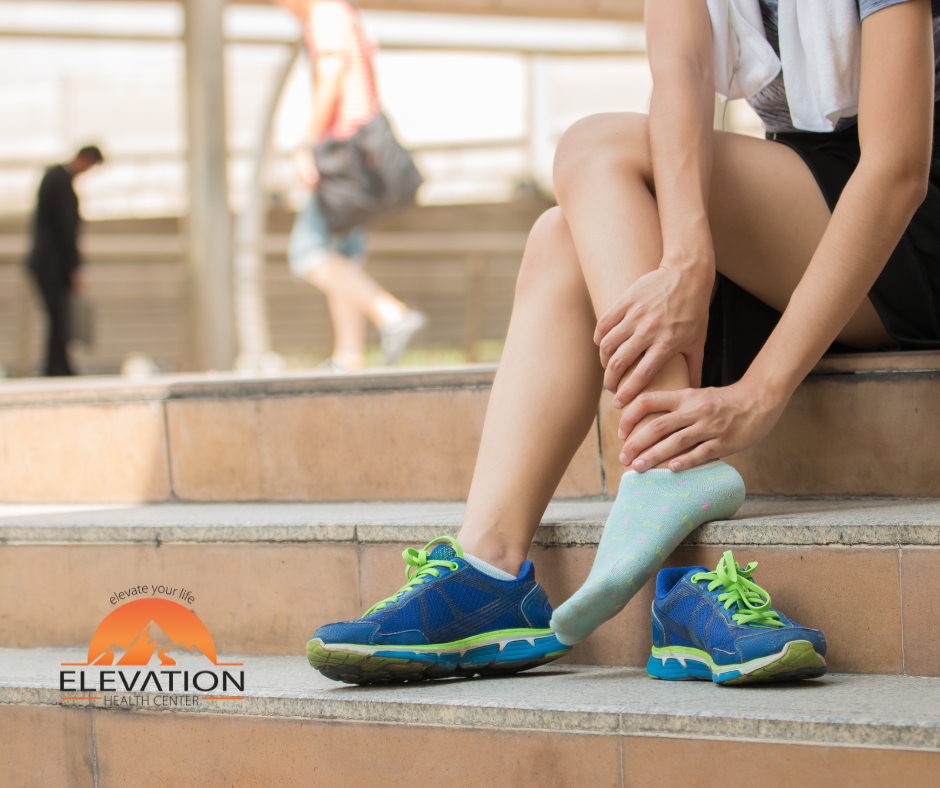
Low-impact exercises, such as Pilates, have gained recognition for their efficacy in neuropathy management. When complemented by modern therapies like laser and red light therapy, these exercise regimens can yield even more significant benefits. If you’ve suffered from neuropathy for any period of time, you know how challenging it can be to find exercises that help manage your symptoms, so you can use this list as a reference guide.
The Role of Exercise in Neuropathy Management
Exercise is a cornerstone in the management of neuropathy. It enhances blood circulation, which can help nourish damaged nerves and promote healing. Moreover, physical activity releases endorphins, the body’s natural painkillers, which can help reduce pain and improve mood. For individuals with neuropathy, low-impact exercises are particularly beneficial as they minimize the risk of further nerve damage and joint stress.
Managing neuropathy involves a multifaceted approach where low-impact exercises like Pilates play a vital role. When these exercises are complemented by modern therapies such as laser and red light therapy, individuals can experience significant improvements in their symptoms and overall quality of life. Adopting this integrated approach can empower those with neuropathy to lead more active, comfortable, and fulfilling lives.
Pain Relief Essentials: Neuropathy Exercises to Try
If you’ve suffered from neuropathy for any period of time, you know how challenging it can be to find exercises that help manage your symptoms. Here is our latest list of exercise suggestions that can be highly effective in managing pain:
What are the best exercises for neuropathy relief?
Exercises like walking, swimming, and cycling can help with neuropathy relief. Strengthening exercises focusing on balance and flexibility, such as yoga or tai chi, are also beneficial. Consult a healthcare provider before starting any exercise regimen for neuropathy.
Low-impact exercises, such as Pilates, have gained recognition for their efficacy in pain management. When complemented by modern therapies like laser and red light therapy, these exercise regimens can yield even more significant benefits.
The Role of Exercise in Neuropathy Management
Exercise is a cornerstone in the management of neuropathy. It enhances blood circulation, which can help nourish damaged nerves and promote healing. Moreover, physical activity releases endorphins, the body’s natural painkillers, which can help reduce pain and improve mood. For individuals with neuropathy, low-impact exercises, such as walking, swimming, or cycling, are particularly beneficial as they minimize the risk of further nerve damage and joint stress.
Pilates: A Gentle Yet Effective Approach
Pilates, a low-impact exercise system focusing on core strength, flexibility, and body awareness, is especially suitable for those managing neuropathy. It offers a range of benefits that are particularly relevant:
- Improved Circulation: Pilates exercises enhance blood flow, which is crucial for nerve health and function.
- Increased Flexibility: Gentle stretching in Pilates helps maintain flexibility, reducing stiffness and discomfort.
- Strengthened Muscles: By focusing on core strength, Pilates helps stabilize and support the body, alleviating pressure on affected nerves.
- Better Balance and Coordination: Peripheral neuropathy often affects balance, but Pilates exercises can improve stability and coordination, reducing the risk of falls.
Some Pilates exercises particularly beneficial for neuropathy include:
- Footwork on the Reformer: This exercise helps improve circulation in the lower extremities while strengthening the legs.
- Leg Circles: This movement enhances hip flexibility and strength, aiding overall mobility.
- Spine Stretch Forward: A gentle stretch that helps elongate the spine and relieve tension in the back and neck.
Low Impact Exercises: A Complementary Approach
In addition to Pilates, other exercises can significantly aid in neuropathy management:
- Walking: Regular walking improves circulation, helps control blood sugar levels, and enhances cardiovascular health.
- Swimming: The buoyancy of water reduces stress on the joints and nerves, making swimming an excellent exercise for those with neuropathy.
- Tai Chi: This ancient practice combines slow, deliberate movements with deep breathing and meditation, improving balance, flexibility, and overall nerve health.
Enhancing Exercise Benefits with Laser and Red Light Therapies
Modern therapies such as laser and red light therapy can significantly enhance the benefits of exercise for neuropathy management. These therapies work by stimulating cellular repair and reducing inflammation, leading to improved nerve function and pain relief.
Laser Therapy
Laser therapy, particularly Class IV laser therapy, penetrates deep into the tissues, promoting cellular regeneration and reducing inflammation. This therapy can accelerate healing and provide pain relief, making it an excellent complement to an exercise regimen. By reducing pain and inflammation, laser therapy allows individuals to participate more actively in their specific exercise routines, thereby enhancing the overall benefits.
Red Light Therapy
Red light therapy (RLT) uses low-level wavelengths of light to penetrate the skin and stimulate cellular function. It has been shown to improve blood flow, reduce inflammation, and promote healing. For diabetic neuropathy patients, RLT can help alleviate pain and improve nerve function, making exercise more comfortable and effective. Combining RLT with regular exercise can lead to a synergistic effect, where the benefits of both treatments are amplified.
Integrating Neuropathy Exercises and Modern Therapies
For optimal neuropathy management, integrating low-impact exercise with modern therapies like laser and red light therapy is essential. Here’s how to do it effectively:
- Consult a Professional: Before starting any new exercise or therapy regimen, consult with a healthcare provider or physical therapist to tailor the program to your specific needs.
- Start Slowly: Begin with gentle exercises and gradually increase intensity as your body adapts.
- Consistency is Key: Regular, consistent exercise and therapy sessions yield the best results.
- Listen to Your Body: Pay attention to how your body responds and adjust your routine accordingly.
Managing neuropathy involves a multifaceted approach where low-impact exercises like Pilates play a vital role. By building muscle tone and the body’s ability to function properly, and these exercises are complemented by modern therapies such as laser and red light therapy, individuals can experience significant improvements in their symptoms and overall quality of life. Adopting this integrated approach can empower those with neuropathy to lead more active, comfortable, and fulfilling lives.
Combining Nutrition with Exercise and Therapy
A holistic approach to managing neuropathy involves not only low-impact exercises and modern therapies but also proper nutrition. A balanced diet rich in essential nutrients can support nerve health and enhance the effects of exercise and therapy.
Key Nutrients for Nerve Health:
- B Vitamins: Essential for nerve function, particularly B1 (thiamine), B6 (pyridoxine), and B12 (cobalamin). These vitamins help protect nerves from damage and support their repair.
- Omega-3 Fatty Acids: Found in fish oil, flaxseeds, and walnuts, omega-3 fatty acids have anti-inflammatory properties that can help reduce nerve inflammation.
- Antioxidants: Vitamins E and C, as well as other antioxidants, can protect nerves from oxidative stress and damage.
Dietary Tips for Neuropathy Management:
- Incorporate Whole Foods: Focus on whole grains, lean proteins, healthy fats, and plenty of fruits and vegetables.
- Stay Hydrated: Proper hydration is essential for overall health and can aid in reducing inflammation.
- Limit Sugar and Processed Foods: High sugar intake can worsen neuropathy symptoms, especially for those with diabetic neuropathy.
Mind-Body Connection: The Role of Stress Management
Managing stress is another crucial aspect of neuropathy management. Chronic stress can exacerbate neuropathy symptoms by increasing inflammation and affecting overall nerve health. Integrating stress management techniques with exercise and modern therapies can provide comprehensive relief.
Stress-Reducing Practices
- Meditation and Mindfulness: Regular meditation can help reduce stress levels and improve overall mental well-being. Mindfulness practices can also help individuals manage chronic pain and enhance their quality of life.
- Deep Breathing Exercises: Deep, controlled breathing can activate the body’s relaxation response, reducing stress and promoting a sense of calm.
- Yoga: Combining physical movement with breath control and meditation, yoga can improve flexibility, strength, and mental clarity. It is particularly beneficial for individuals, as it can help reduce pain and improve overall well-being.
Integrating Exercise, Nutrition, and Therapy: A Comprehensive Plan
Creating a comprehensive plan that integrates exercise, nutrition, and modern therapies can provide the most effective relief for symptoms. Here’s a step-by-step guide to developing a well-rounded management plan:
- Consult Healthcare Professionals: Work with a doctor or chiropractor at Elevation Health Center, physical therapist, and nutritionist to create a personalized plan tailored to your specific needs.
- Start with Low-Impact Exercises: Begin with gentle Pilates exercises and gradually incorporate other low-impact activities such as walking and swimming.
- Incorporate Modern Therapies: Use laser and red light therapies to enhance the benefits of your exercise regimen and promote nerve healing.
- Focus on Nutrition: Ensure your diet is rich in essential nutrients that support nerve health. Consider supplements if necessary, under the guidance of your healthcare provider.
- Practice Stress Management: Integrate stress-reducing practices such as meditation, deep breathing, and yoga into your daily routine.
By combining these elements, individuals with neuropathy can experience significant improvements in their symptoms and overall quality of life. This holistic approach not only addresses the physical aspects of this condition but also supports mental and emotional well-being, leading to a more balanced and fulfilling life.
Learn more about how combining certain exercises with the right therapies can make all the difference in pain management. Call us for an initial assessment and a complimentary red light therapy treatment.

